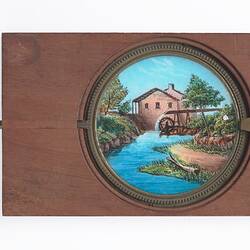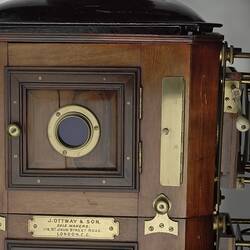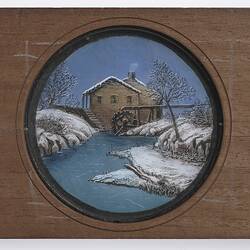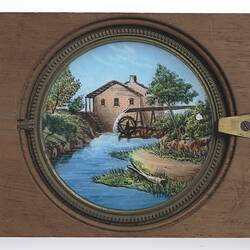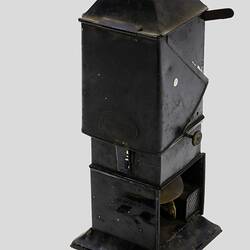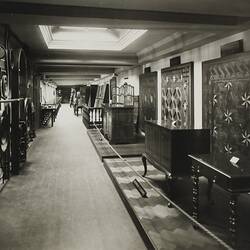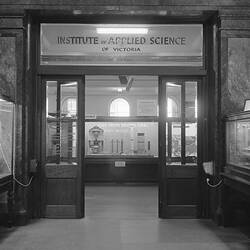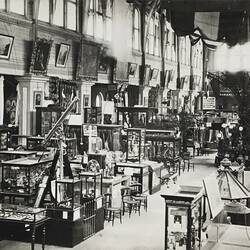Summary
A triunial magic lantern projector, consisting of three individual projection systems which are integrated into one unit. The top unit can be separated from the lower two, creating a biunial and single lantern projector. Each of the projection systems incorporates an illuminant, slide holder and telescopic barrel, containing glass lenses.
Originally the lantern was illuminated by oxy-hydrogen light but at some stage this was altered to a 250 volt electrical system for all three projection systems. The body is constructed of mahogany, with brass fittings, while the telescopic barrels are made of brass.
The projector was manufactured by J. Ottway & Son, opticians and brass turners practicing in London in 1891.
This lantern was manufactured for the Salvation Army in England and was used by them until the 1950s.
While the invention of the magic lantern is generally seen to be in the 17th century, its greatest popularity as an optical projector spans the late 18th Century to the early decades of the 20th Century. It was used both as a means of entertainment and education.
This lantern projector is part of the Francis Collection of pre-cinematic apparatus and ephemera, acquired by the Australian and Victorian Governments in 1975. David Francis was the curator of the National Film and Sound Archive of the British Film Institute as well as being a co-founder of the Museum of the Moving Image in London, which was operational between 1988 and 1999.
Francis used this triunial lantern in some of his own lectures concerning magic lanterns and their use.
Physical Description
A projector with the body made of mahogany, with brass fittings and the three telescopic projector tubes made of brass, with glass lens systems. The power supply is modern mains electricity. A black metal cowl surmounts the object. The top projection unit can be separated from the two lower units to form a biunial and single lantern.
More Information
-
Collection Names
-
Collecting Areas
-
Acquisition Information
Loan & Subsequent Donation from Australian Film Institute (AFI), Mr David Francis, by Nov 1990
-
Manufacturer
J. Ottway & Son, 176 St John Road, London, England, Great Britain, 1891
-
Collector
Mr David Francis, London, Middlesex, England, Great Britain, 1990
-
Inscriptions
Plate on right hand side of Lantern reads: 'J. OTTWAY & SON,/SOLE MAKERS./178. ST JOHN STREET ROAD./LONDON.E.C.'
-
Classification
-
Category
-
Discipline
-
Type of item
-
Overall Dimensions
900 mm (Length), 500 mm (Width), 1100 mm (Height)
-
References
Francis, D., 'The Origins of the Cinema: A Mid-Summer 1968 Exhibition', Exhibition Catalogue 1968.
[Book] Robinson, David, et al. 2001. Encyclopaedia of the Magic Lantern., 2001, 215 Pages
-
Keywords


